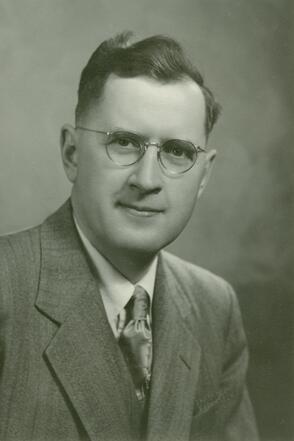
Zone du titre et de la mention de responsabilité
Titre propre
Dr. Harold E. Johns - Portrait
Dénomination générale des documents
- Document graphique
Titre parallèle
Compléments du titre
Mentions de responsabilité du titre
Notes du titre
Niveau de description
Pièce
Cote
Zone de l'édition
Mention d'édition
Mentions de responsabilité relatives à l'édition
Zone des précisions relatives à la catégorie de documents
Mention d'échelle (cartographique)
Mention de projection (cartographique)
Mention des coordonnées (cartographiques)
Mention d'échelle (architecturale)
Juridiction responsable et dénomination (philatélique)
Zone des dates de production
Date(s)
-
[ca. 1948] (Production)
Zone de description matérielle
Description matérielle
1 photograph : b&w
Zone de la collection
Titre propre de la collection
Titres parallèles de la collection
Compléments du titre de la collection
Mention de responsabilité relative à la collection
Numérotation à l'intérieur de la collection
Note sur la collection
Zone de la description archivistique
Nom du producteur
Historique de la conservation
Portée et contenu
Head and shoulders image of Dr. Harold E. Johns, professor of Physics from 1945-1956.
Bio/Historical Note: Dr. Harold Elford Johns was, perhaps, the most influential medical physicist in Canadian history. He was born in 1915 in West China where his parents were educational missionaries. After the family returned to Canada in 1926, Dr. Johns obtained an MA in Physics from McMaster University and a PhD from the University of Toronto. He worked first at the University of Alberta in Edmonton and then at the University of Saskatchewan (1945-1956), where he became interested in cancer treatment. In May 1948 Drs. Johns, Newton Haslam and Leon Katz, all Physics faculty, travelled to Milwaukee to inspect the betatron that had been built for Saskatchewan. In August of that same year, the U of S installed in the Physics Annex the first betatron in Canada - the world’s first betatron used for a cancer treatment program. Dr. Johns then began the design and construction of one of the first cobalt-60 teletherapy units. In 1951 Dr. Johns and his graduate students became the first researchers in the world to successfully treat a cancer patient using cobalt-60 radiation therapy. In early 1952 Maclean's magazine had dubbed the cobalt-source radiotherapy machine the cobalt bomb - a tongue-in-cheek tribute to this peaceful use of nuclear technology. Dr. Johns’ pioneering work in cobalt-60 teletherapy became the gold standard for radiation therapy for many years and thousands of units were installed worldwide, helping countless patients. Working with Dr. Johns was Dr. Sylvia Fedoruk (1927-2012), part of the team of U of S scientists involved in the development of the cobalt-60 unit. The original treatment device was used in Saskatchewan until 1972. The work Dr. Johns and his team did on the physics of high energy photon beams was fundamental, and still forms the basis of most treatment planning systems in use today. In 1953 he published the first edition of “The Physics of Radiology” which became the leading textbook in its field for several decades. In 1956 Dr. Johns became head of the Physics Division of the Ontario Cancer Institute and professor of Medical Biophysics at the University of Toronto. For several years he studied the chemical processes that lead to radiation damage, and finally in the 1970s he turned his hand to x-ray imaging. All of Dr. Johns’ work was aimed at improving the diagnosis and treatment of cancer. The U of S awarded Dr. Johns an honourary Doctor of Laws degree in 1959. Harold Johns died in 1998.
Zone des notes
État de conservation
Source immédiate d'acquisition
Classement
Langue des documents
Écriture des documents
Localisation des originaux
Disponibilité d'autres formats
Restrictions d'accès
Délais d'utilisation, de reproduction et de publication
Photographer: Charmbury
Copyright holder: Unknown

